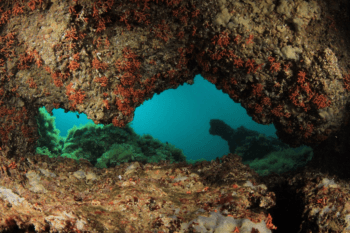164 Gulf Sites Named For Aggies

It might soon be called the Gulf of Mexico at Texas A&M. A recent batch of underwater features in the Gulf have been named for Texas A&M University people or affiliations, and now total 164, according to figures from the U.S. Board on Geographic Names.
It’s believed Texas A&M has more underwater features named after it than any other university in the world.
There are hundreds of underwater canyons, basins, ridges, mounds, valleys and other topographical features in the Gulf, and for location purposes, names are assigned to them, according to various criteria set by the U.S. Board on Geographic Names, which has the authority to designate such features.
Recent additions include features named for Department of Oceanography professors William Bryant, Troy Holcombe, Steve DiMarco, Piers Chapman, Niall Slowey and Worth Nowlin.
Others named for Texas A&M at Galveston professors include Gil Rowe and the late Sammy Ray.
Also, a newly mapped area of the Gulf of Mexico sea bottom will include geographic features named for Texas A&M-Corpus Christi’s Harte Research Institute (HRI) for Gulf of Mexico Studies and its Endowed Chair for Biodiversity and Conservation Science Wes Tunnell. Tunnell Mound is located on the upper continental slope south of Louisiana, and Harte Bank is located on the outer continental shelf among the South Texas Banks off southern Texas.
Tunnell is a marine ecologist and biologist focusing primarily on coastal and coral reef ecosystems, and has been studying the banks off South Texas since his graduate research work at Texas A&M University, now Texas A&M University-Kingsville, in the late 1960s. He is founder and former director of the Center for Coastal Studies at Texas A&M-CC, and he assisted in the development of the Harte Research Institute and has published five books and more than 100 papers on topics related to the Gulf of Mexico.
Many such canyons and basins were named 30 years ago for Texas A&M people, including the late Texas A&M President Earl Rudder. Even Reveille, the school’s collie mascot, has a basin named for her.
In 2013, the world’s largest volcano – covering about 120,000 square miles, roughly the size of New Mexico – was discovered in the northern Pacific Ocean and was dubbed Tamu Massif. The volcano, which became dormant about 145 million years ago, was discovered by William Sager, a long-time oceanographer at Texas A&M who is now at the University of Houston.
Tamu Massif follows a long line of underwater locations named after Texas A&M or people associated with it. These include many topographic features in the Gulf of Mexico or Atlantic seaboard, including Antoine Bank, named for Texas A&M researcher John Antoine; Geyer Mound and Geyer Bank, named for Texas A&M researcher Richard Geyer; McGrail Bank, named after Texas A&M oceanographer David McGrail; Tamu Basin, Tamu Bank and Tamu Dome, all named for the school; Bryant Canyon, named after oceanographer William Bryant; Rudder Basin and Reveille Basin, named for former president James Earl Rudder and the school’s collie mascot; Gyre Basin, named for a former Texas A&M research ship; and Applebaum Bank, named for Texas A&M researcher Bruce Applebaum.
Media contact: Keith Randall, Texas A&M News & Information Services.





